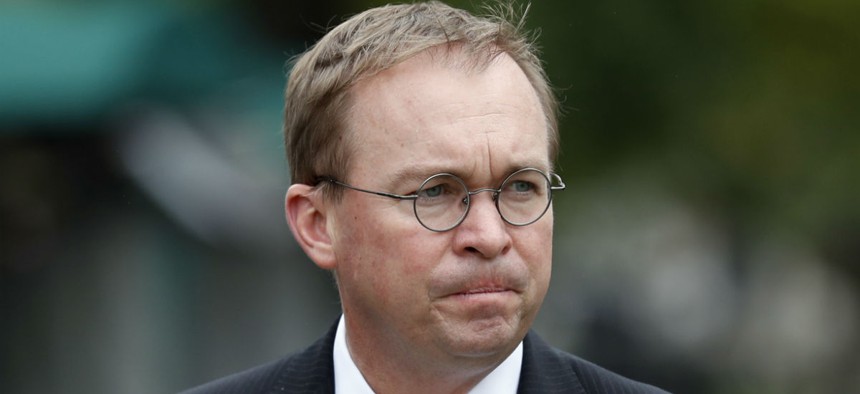Trump Budget Director Bemoans Fate of Proposed Spending Cuts
Congress accepted less than $5 billion of the White House’s proposed $54 billion in discretionary cuts.
The Trump White House may be excited about Congress’s plans to take up tax cuts, but it is less pleased about the fate of the spending reductions it proposed in March.
Budget Director Mick Mulvaney said in a Sunday appearance on CBS News’ “Face the Nation” that of the $54 billion in discretionary cuts the Trump team had proposed in its fiscal 2018 “skinny budget” last March, “only about $4 or $5 billion have survived so far on the Hill.” The former congressman who under President Obama was a steady deficit hawk added: “We're not going to be able to cut our way to balance. We've made a decision now within the administration that plan A or part of plan A, which was to try and cut our way to balance, just wasn't going to get very far in Washington D.C.”
Mulvaney said the new plan is to “focus on the revenues” from accelerated economic growth that Republicans and the Trump White House believe will result from tax reform.
Moderator John Dickerson pressed him, however, saying, “Republicans for a long time have talked about spending restraint. And so to now say, ‘Well, we're going to do it through growth,’ that's a big—that's no small deal. It's like Weight Watchers saying, ‘Well, we're going to give up the dieting part.’ "
Mulvaney replied that he “is not giving up entirely on spending. It's just you have to sit there and go, ‘Okay, there's two parts to this equation.’ There isn't the political will on the Hill right now…. It’s difficult, I think, to cut spending in Washington.”
He then blamed the 1974 Congressional Budget and Impoundment Control Act, which established today’s budget process. That act “drives everything that we do, every dollar that we spend, [and] is designed to spend more money one year from the next. That's the bill that says if you spend $100 last year and $104 this year we call it a cut. I'm not making that up. So the law really is set up to spend more money. It's hard to get out of that cycle.”
The budget director added that Congress and the administration have “bigger issues than just spending” to deal with, among them the long-standing effort to repeal and replace Obamacare and tax reform.
Tax reform played a major part in calculations for the recently approved House and Senate budget resolutions, which do not require the president’s signature. The House version passed Oct. 5 proposed $1.5 trillion in spending cuts over 10 years while mandating that the House Oversight and Government Reform Committee find $32 billion in spending cuts over those 10 years.
The Senate version approved on Oct. 19 orders the Senate Energy and Natural Resources Committee to slash $1 billion in spending over the next decade.
But neither the budget resolutions heading to conference nor the fiscal 2018 appropriations bills that have moved so far would go as far as the Trump budget—which also offered unsuccessful proposals to eliminate 19 agencies.
The State Department and the Environmental Protection Agency, two of the agencies that Trump targeted for the steepest cuts, would see some trims. For example, the House spending bill would fund EPA at $7.5 billion, a cut of $528 million from the previous year, but $1.9 billion above the administration’s request.
The State Department, under the Senate spending bill, would be funded at $51.1 billion, or $10.7 billion above Trump’s request, but $1.9 billion below the fiscal 2017 level.
NEXT STORY: Republicans Rally Around Raising the Deficit




